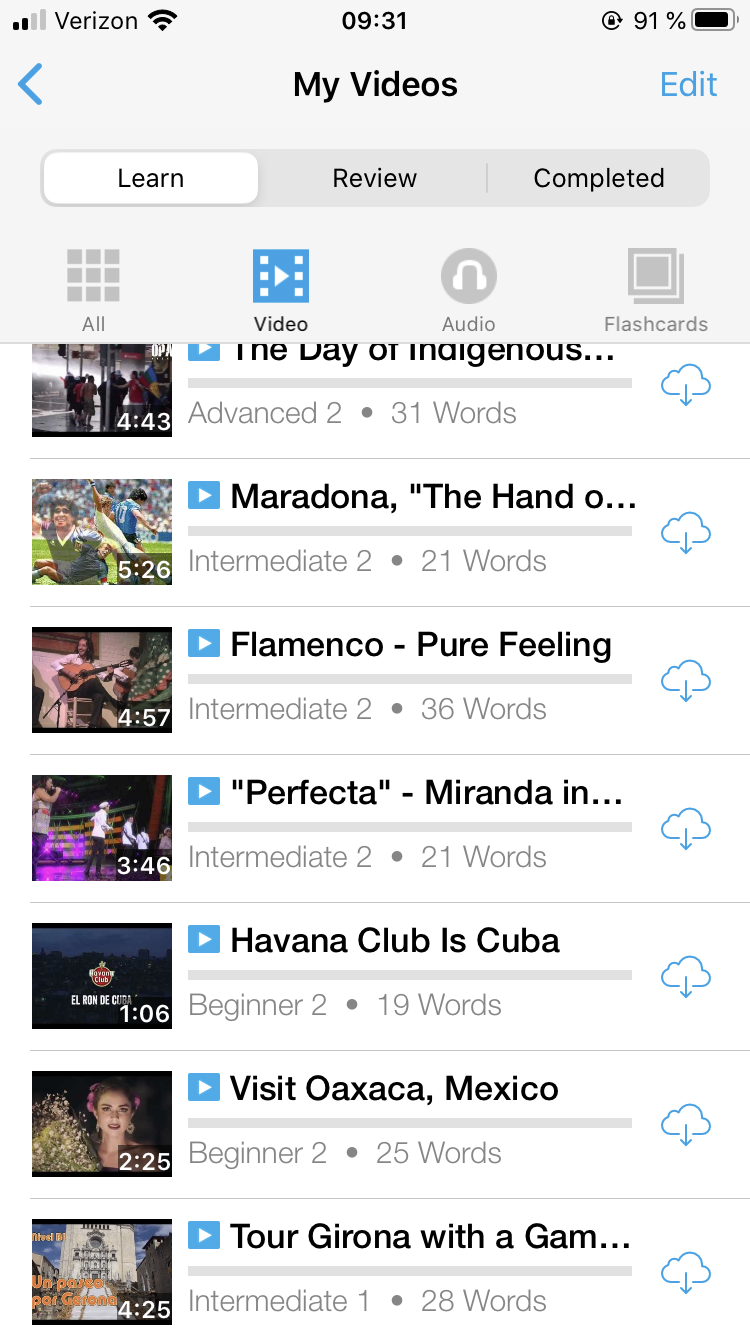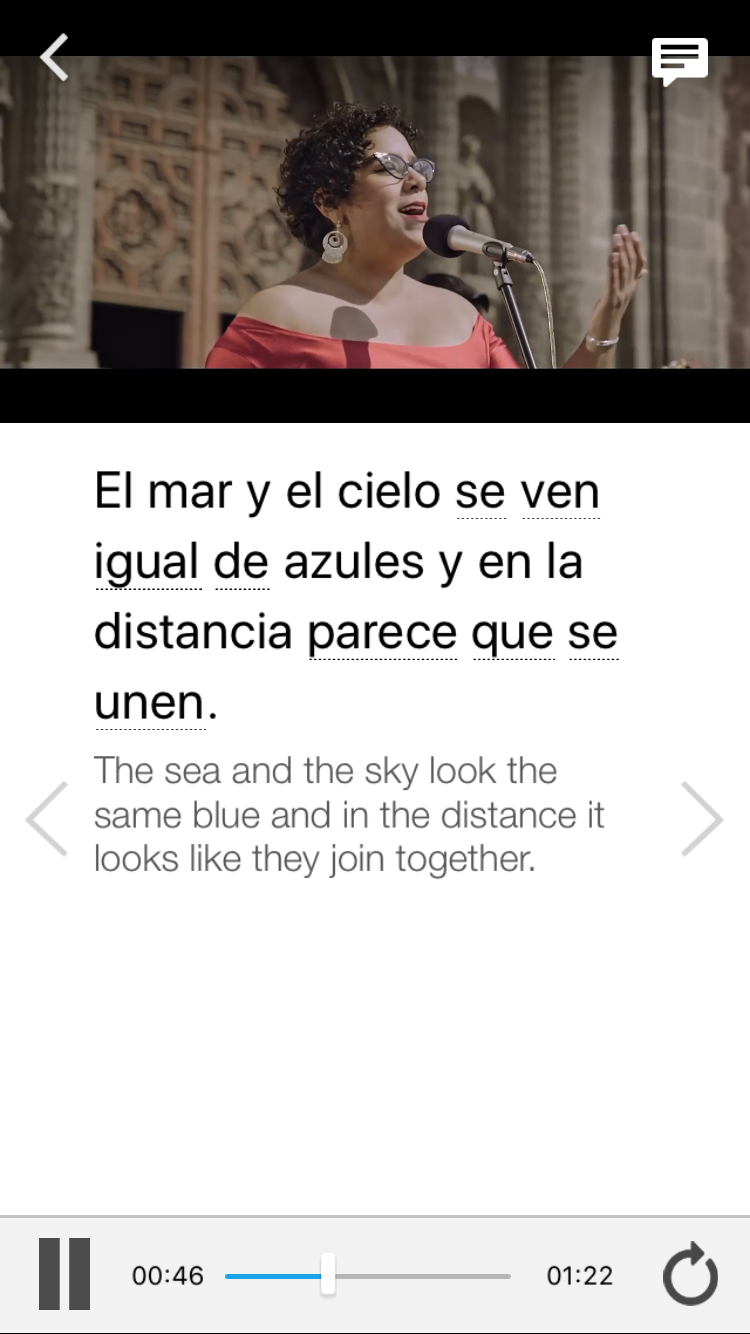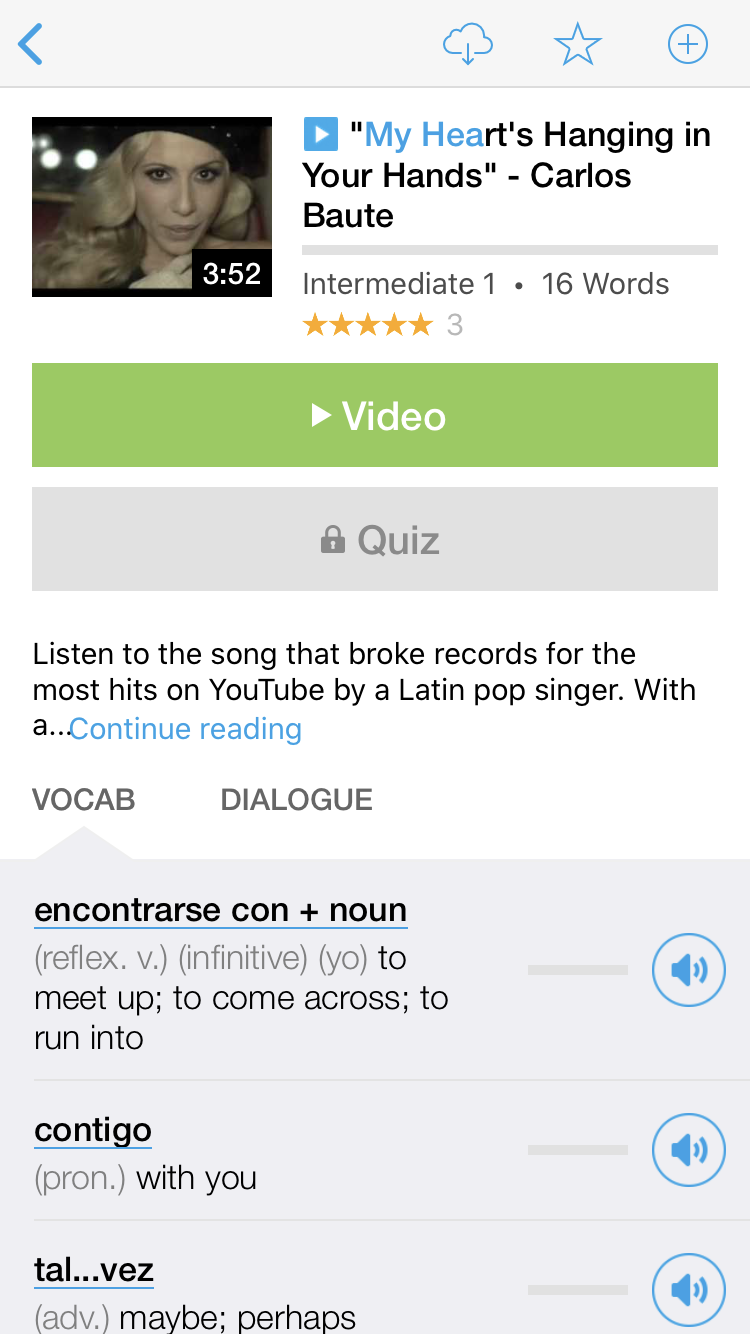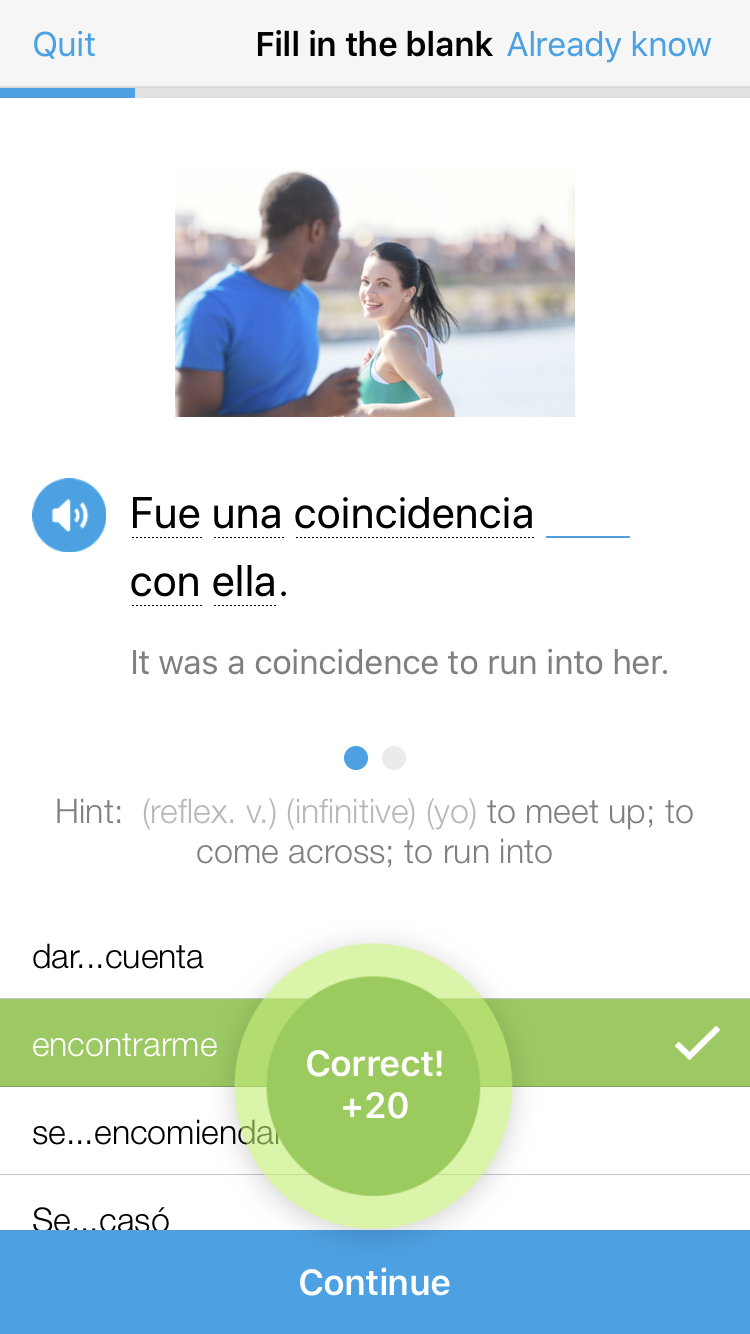how to say drawing in spanish
Reading Spanish can be daunting.
You have strange new words, accents and symbols that you've never seen in English.
It can look like a monster growling at you.
Well no fear, I am here to help you and encourage you as you start improving your Spanish reading skills.
Download: This blog post is available as a convenient and portable PDF that you can take anywhere. Click here to get a copy. (Download)
How to Start Reading Spanish as Easy as ABC
The first thing to know is that you can sound out Spanish words relatively easily. Each letter of the alphabet has one sound that it makes and it always makes that sound, unlike English where the letter "a" makes three different sounds depending on where it is in the word.
You can easily see this by checkingFluentUout.
FluentU's videos will surround you by native Spanish pronunciation, which is the key to learning how to read. Give it a free try and you'll be reading your way to fluency in no time.In the meantime, let's review the sounds that the letters make.
Letter Sounds
We're going to start with the basics, the ABCs. How did you learn the ABCs in English? With a song.
That's exactly what we're going to do in Spanish. Go ahead and watch this YouTube clip of the Spanish ABCs. Spanish is a phonetic language, unlike English. What that means is that every letter makes the same sound in the alphabet as it does in a word.
Confusing?
I promise it isn't. Let's take the Spanish lettera for example. A will always make the "ah" sound, as in "father." This is different from English where "k" can either have a hard sound like in "kitty" or no sound like in "knowledge."
What does this mean? It means that once you've mastered the sound for each Spanish letter, you'll be able to sound out words very easily in Spanish.
Let's start with the vowels.
Vowels
You'll be hard pressed to correctly spell any words or read any words well if you don't know the basic vowel sounds. The great thing about Spanish is that the vowels, in my opinion, are easier to understand than in English. You don't have the rules like "when two vowels go a walking" or "i before e except after c…" What you see is what you get. Vowels in Spanish always make the same sound.
A — "ah" as in "ah ha!" or "father"
E — "eh" as in "excuse" or "bed"
I — "ee" as in "beet" or "seek"
O — "oh" as in "know" or "open"
U — "oo" as in "sue" or "do."
The u is the only vowel that's a little tricky. In some words it doesn't make a sound, but more on that later).
Silent Letters
Now that we have the vowel sounds we need to move on to the consonants. There are a few consonants in Spanish that never make a sound. Why they are in the alphabet at all is a mystery to me. But they are there and we need to learn them.
H —Hijo is pronounced "ee-ho."
U — When coupled with q and g the letteruis silent. Guitarra is pronounced "gee-tar-ah."
Ps — If you see these two letters together, the p is silent. Psicología is pronounced "see-koh-loh-hee-ah."
The Rest of the Letters
Let's move on to the other letters. Most of these are pretty self-explanatory if you listen to the ABC song. For example, B is pronounced the same as in the song "beh." Here's a great YouTube link that goes over all of the sounds that Spanish letters make. She even has it written on a whiteboard so you can copy it down, take it around with you and study it.
There are a few letters that are harder to read because they either sound like other letters or they make multiple sounds. Take a look at the rest of the Spanish letters we haven't discussed yet:
B — "beh"
D — "deh"
F — "feh"
G — "geh"
H — Doesn't make a sound
J — "ho"
K — "kah"
L — "el"
M — "em"
N — "en"
P — "peh"
Q — "coo"
R — "re"
S — "seh"
T — "te"
V — "beh"
W — Not found in Spanish origin words
X — "ex"
Y — "yuh"
Z — "seh"
More Complicated Consonants
The Letter C
This can either be pronounced like the letters (serpiente), as in the wordacelga,or with a hard sound as seen incasa. How can you know which way to read it?
CA — hard c as incasa (KA-sa)
CE — soft c as inceleste (se-LES-te)
CI — soft c as incinco (SEEN-co)
CO — hard c as incosa (KO-sa)
CU — hard c as incuerpo (KU-ER-po)
The LettersB and V
In Spanish these two letters sound very similar. So similar that they are referred to asbeh larga (Long B) andbeh corta(Short B- this is V). When reading these two letters, they make the same sound-beh.
Valencia (bah-len-see-a)
Bailar (ba-ee-lar)
Here's an article that goes more into the depth of the b vs. v issue. Read it to help further your understanding.
The Letter LL
Looking at that you may be thinking, "that's two letter L's." Nope. It's one letter called the doble ele. When two Ls are put next to each other in Spanish, they make a different noise than just one L. When you see them together as LL, they make a sound like the English letter Y.
Llevar (yay-var)
Lluvia (yu-vee-ah)
If you want to study the LL more in depth, here's a link to a lesson completely devoted to this letter.
The LetterÑ
This may be the most intimidating letter in Spanish because it doesn't exist in English. It's used very often and has a unique sound. This letter is called theenyay. It's pronounced like the "ni" seen in onion. You probably recognize and already know how to saypiñata (peen-ya-ta).
Baño(bah-nyo)
The best way to become familiar with this letter is to hear a native say it. That way you'll be able to really hear how the letter sounds. Here's a YouTube link that can help you with that.
Accents (Tilde)
When I started learning Spanish, the accents were what confused me most. However, they're incredibly important when writing and reading Spanish. Accents give words clarity. How so?
Well, perhaps you've noticed that there are some words in Spanish that are exactly the same—except that one has an accent.
Si and sí or tu and tú or el and él.
What's the difference?
Si — If
Sí — Yes
Tu— Your
Tú — You
El— The
Él — He
Mi— My
Mí — Me
There are several other words like this. As you're reading, the best tool you have in your belt is context clues. If you're unsure, read the sentence with both options.
Stressed Out Words
Vowels? Check.
Consonants? Check.
Accents? Check.
Let's put it all together and figure out exactly how to pronounce the words. Where do we put the stress?
There are 4 rules we are going to go over about stress.
1. Words ending in N,S or a vowel without written accent
If a word ends in a vowel, the stress goes on the second to last syllable.
Nada (na-da)
Acento (a-cen-to)
Refrigeradores (re-fri-ge-ra-do-res)
2. Words ending in a consonant (except N and S) with no written accent
If a word ends in a consonant, the stress is on the last syllable of the word.
Cantar (can-tar)
Refrigerador (re-fri-ge-ra-dor)
3. Words with tildes
If a word has a tilde (written accent), the stress goes on that syllable.
Así (a-sí)
Biología (bio-lo-gí-a)
Rápido (rá-pi-do)
Devuélvemelo (de-vuél-ve-me-lo)
4. Words that end with mente
If a word ends with –mente then you're going to have two stresses. In this case one stress in on the strong syllable of the adjective (tris-te, rá-pi-da, etc.) and on men of –mente.
Tristemente (Tris-te-men-te)
Rápidamente (Rá-pi-da-men-te)
Videos to Improve Your Reading
Now that you're an expert with the rules, test your skills. This first video is set up like a textbook. There are simple pictures and sentences. The narrator will read the sentence normally, then break it up. There are subtitles below so that you can read along with him.
Here's a link to a man reading a short story in Spanish. The best thing you can do is pause the video before he starts reading. Read the passage aloud to yourself and record your voice reading it. Then listen to how he reads it and compare it to your own recording.
It may seem like a tedious task, but if you do that then you'll hear the difference in your reading and his reading.
Pick up on those differences and start working to correct them daily.
In no time, you'll be able to read anything in Spanish.
And One More Thing…
If you've made it this far that means you probably enjoy learning Spanish with engaging material and will then love FluentU.
Other sites use scripted content. FluentU uses a natural approach that helps you ease into the Spanish language and culture over time. You'll learn Spanish as it's actually spoken by real people.
FluentU has a wide variety of videos, as you can see here:

FluentU brings native videos within reach with interactive transcripts. You can tap on any word to look it up instantly. Every definition has examples that have been written to help you understand how the word is used. If you see an interesting word you don't know, you can add it to a vocab list.

Review a complete interactive transcript under the Dialogue tab, and find words and phrases listed under Vocab.

Learn all the vocabulary in any video with FluentU's robust learning engine. Swipe left or right to see more examples of the word you're on.

The best part is that FluentU keeps track of the vocabulary that you're learning, and gives you extra practice with difficult words. It'll even remind you when it's time to review what you've learned. Every learner has a truly personalized experience, even if they're learning with the same video.
Start using FluentU on the website with your computer or tablet or, better yet, download the FluentU app.
Download: This blog post is available as a convenient and portable PDF that you can take anywhere. Click here to get a copy. (Download)
If you liked this post, something tells me that you'll love FluentU, the best way to learn Spanish with real-world videos.
Experience Spanish immersion online!
how to say drawing in spanish
Source: https://www.fluentu.com/blog/spanish/how-to-read-spanish/
Posted by: rhodescapassicer.blogspot.com

0 Response to "how to say drawing in spanish"
Post a Comment